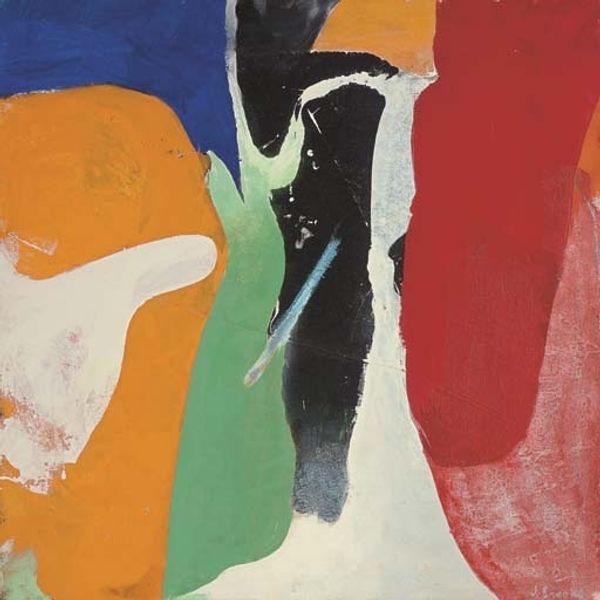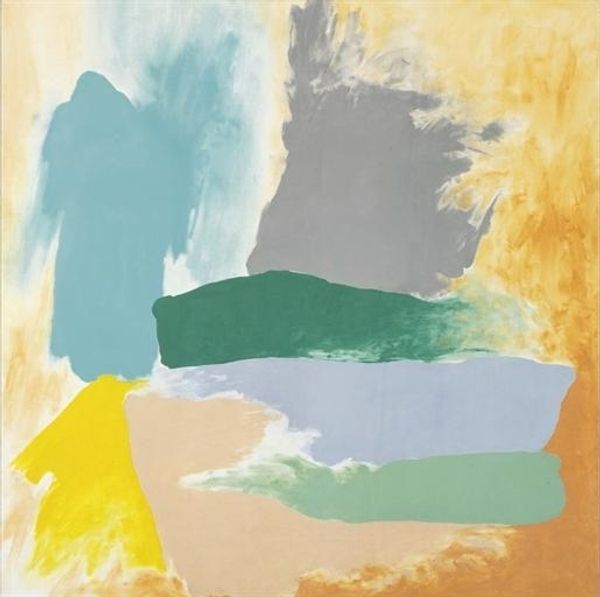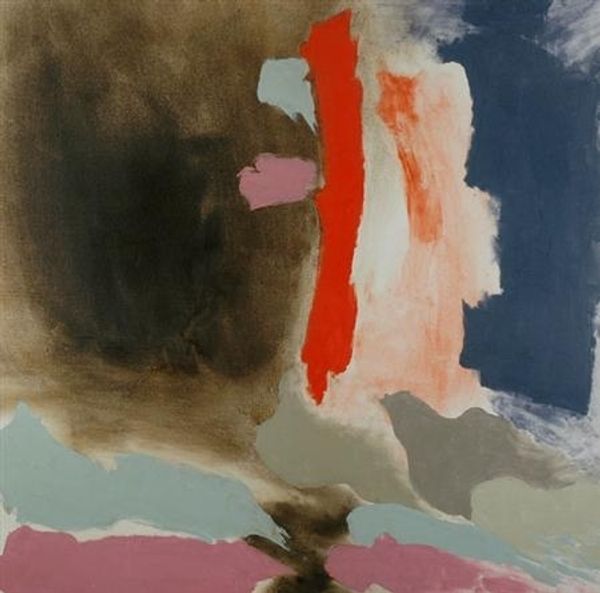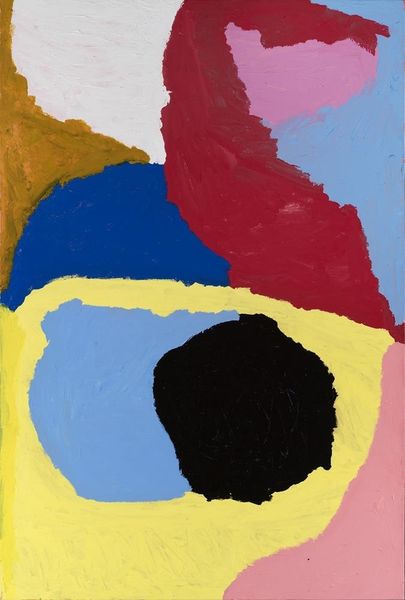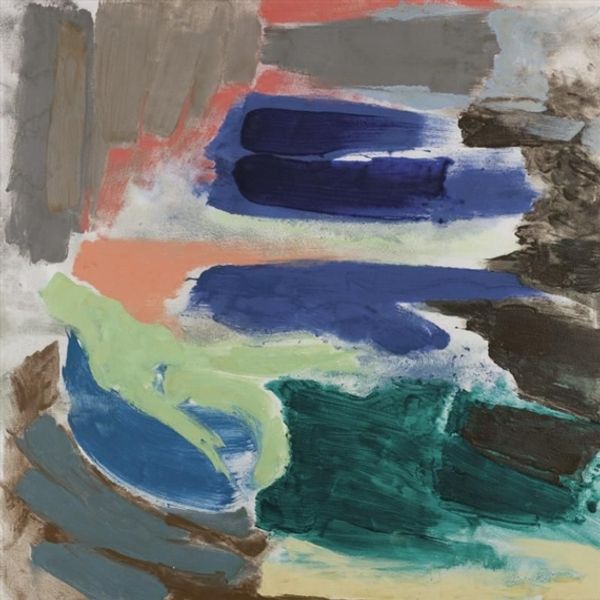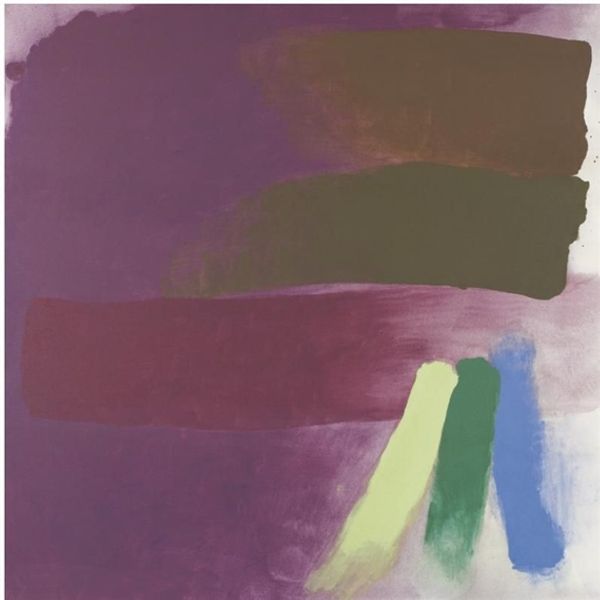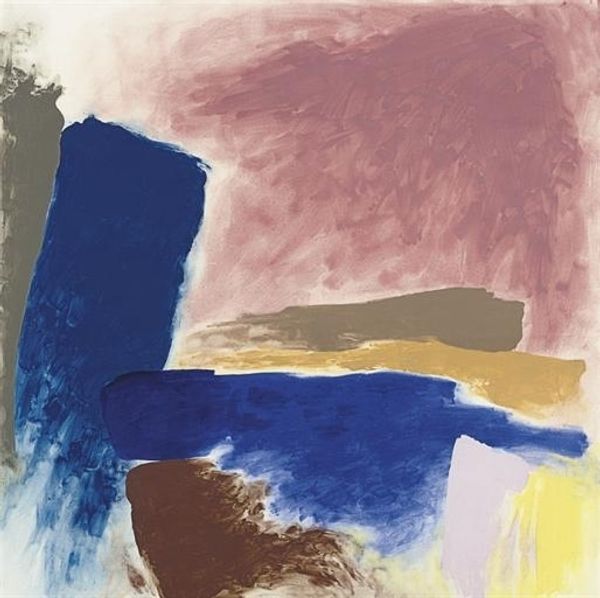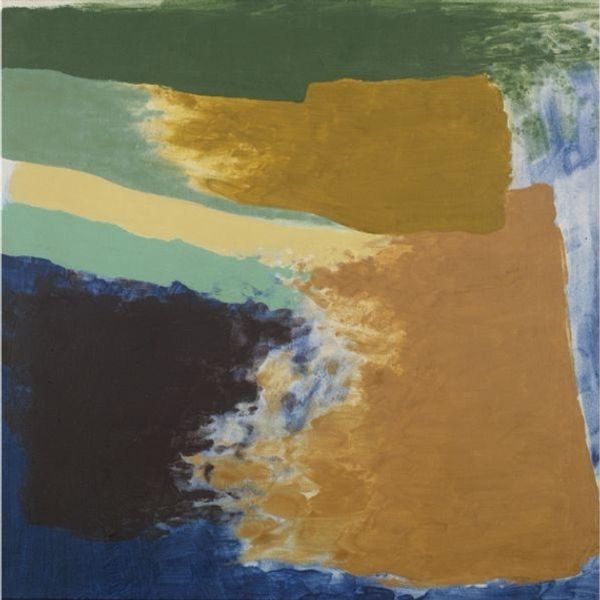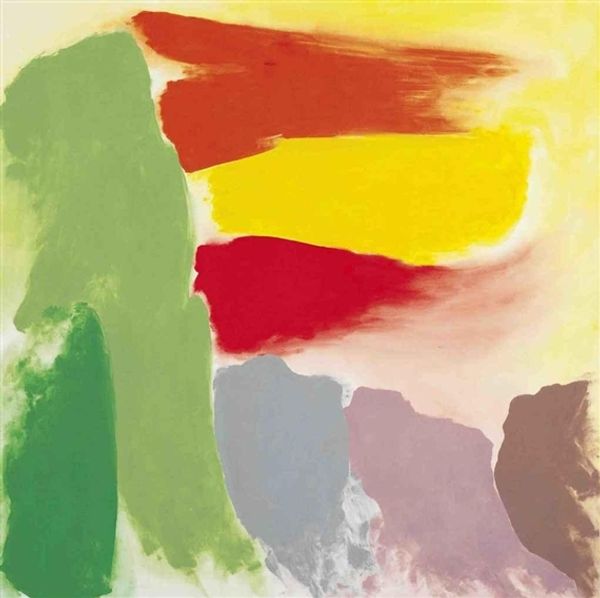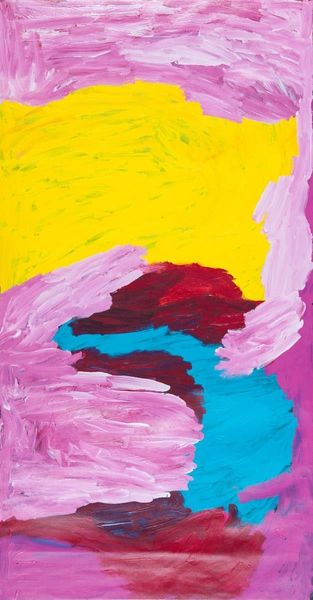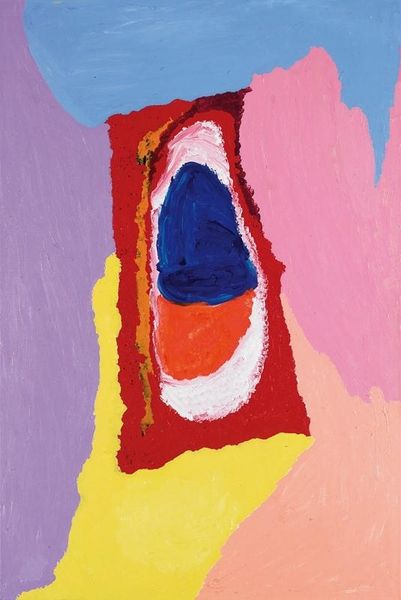
Copyright: Friedel Dzubas,Fair Use
Editor: So, this is "San Bivar Signal" painted by Friedel Dzubas in 1979, using acrylics. I’m immediately struck by the boldness of the colours and the way they interact; it's quite arresting. What do you see in this piece, especially considering its place within the Color Field movement? Curator: Dzubas' work provides us a window into a specific moment of the late 20th century where artists were really questioning the very foundations of painting itself. “San Bivar Signal”, with its sweeping blocks of color, acts almost as a direct response to the social upheavals happening then; movements that called for simplification, for the stripping away of excess. How do you see these forms relating to one another? Editor: I notice how the shapes don't really overlap but rather seem to push against each other. It gives a sense of tension, but also of balance. I can definitely see this as pushing back against more conventional compositions, a more streamlined mode of thought. Curator: Precisely! We should also consider how the “all-over” composition impacts the viewer’s engagement. Are we invited to contemplate individual forms or rather to surrender to a sense of wholistic experience? Think about the era it was created in. Did these artistic experiments of spatial perception carry weight with those advocating societal change? Editor: That’s fascinating, the idea of total immersion reflecting broader social change and engagement. I hadn't considered how deeply interwoven art can be with social movements. Curator: And isn't that the exciting challenge? To explore the intersections, to question what narratives are told, and whose voices are amplified in art history! Editor: Absolutely. This piece has definitely given me a new perspective. Thank you. Curator: My pleasure! There's always more to unpack with a painting like this.
Comments
No comments
Be the first to comment and join the conversation on the ultimate creative platform.
